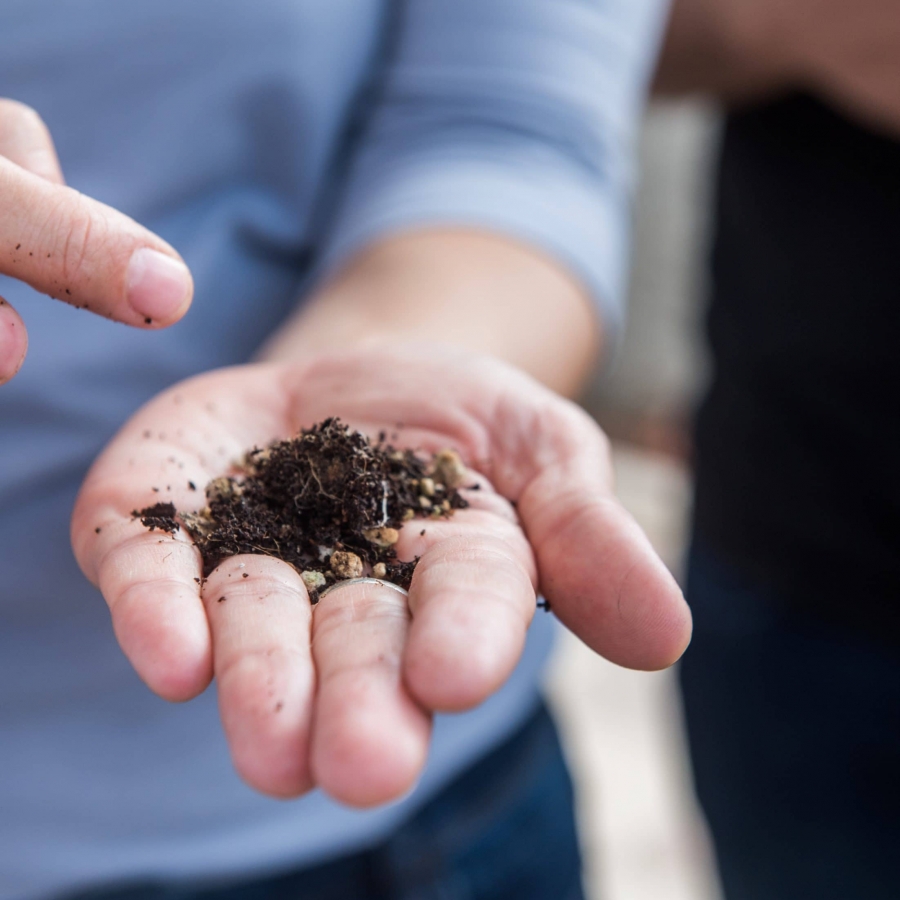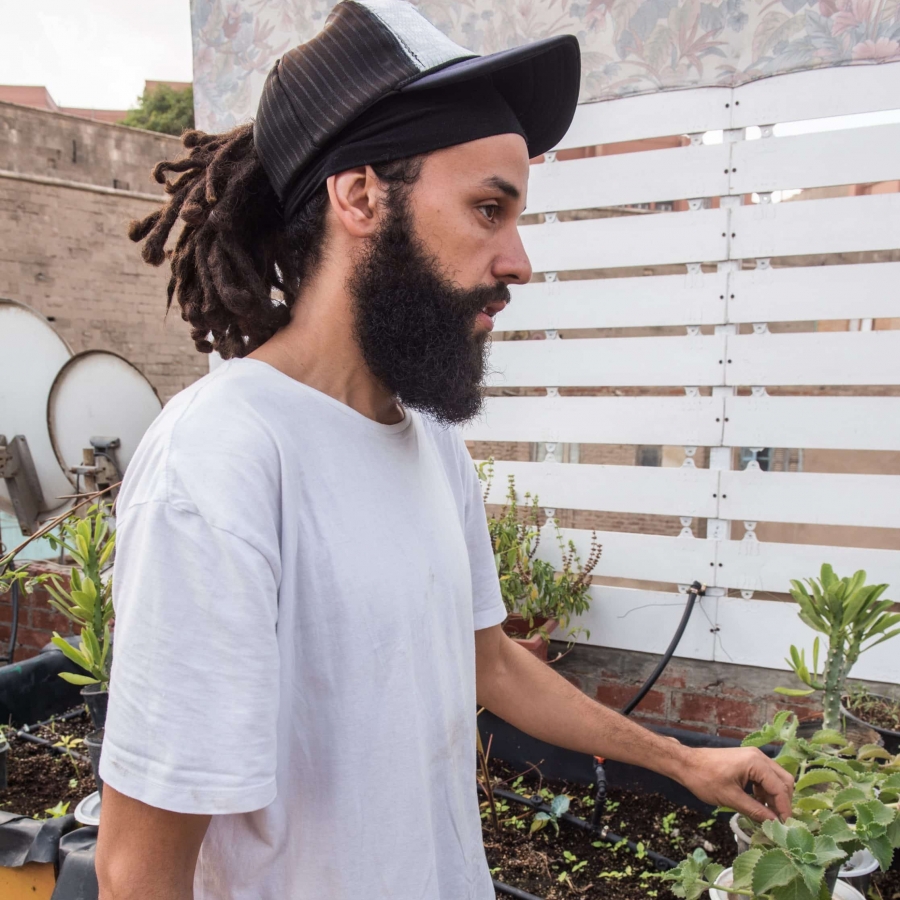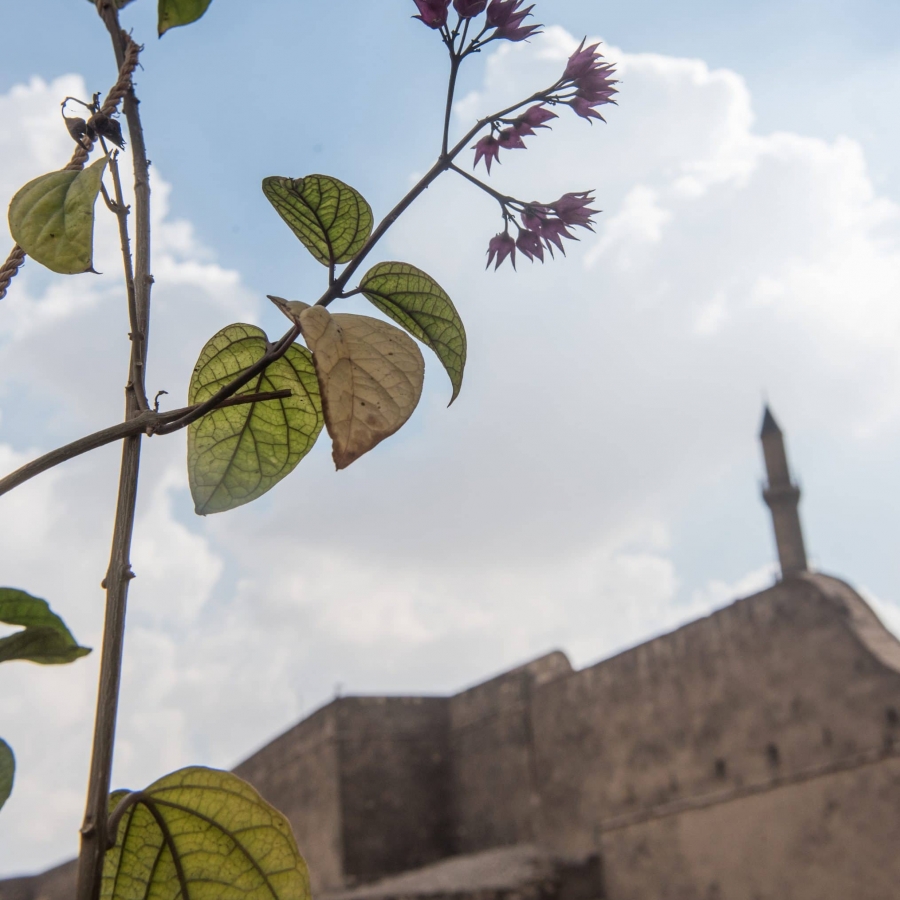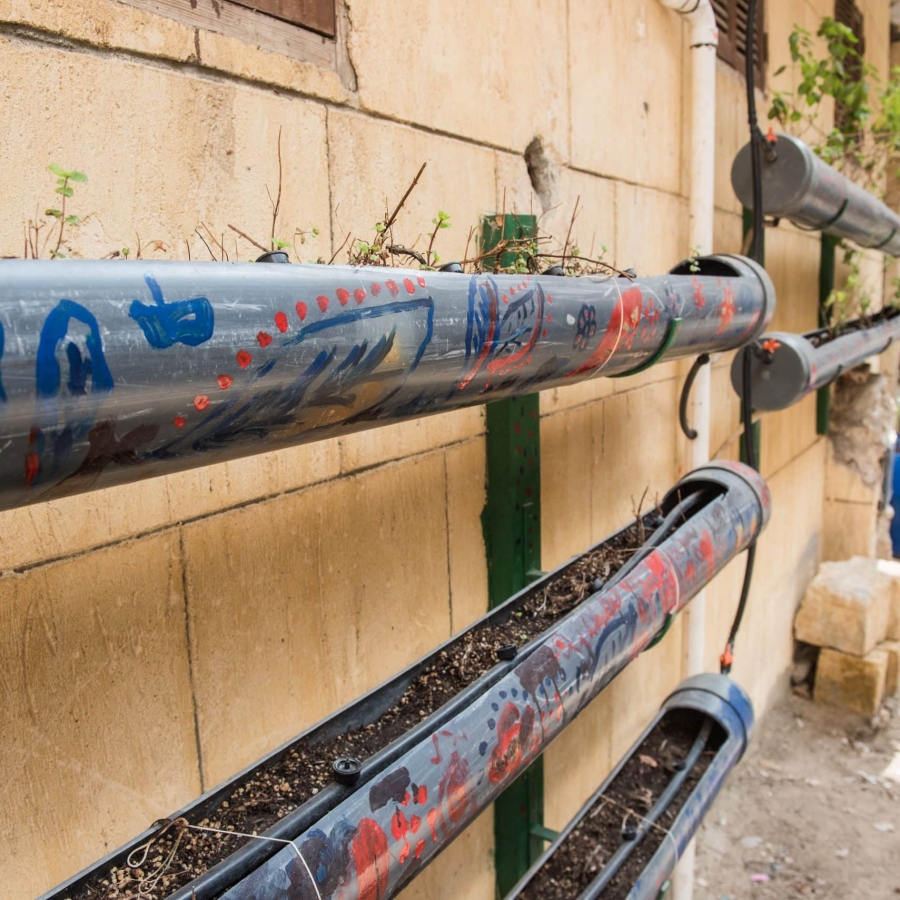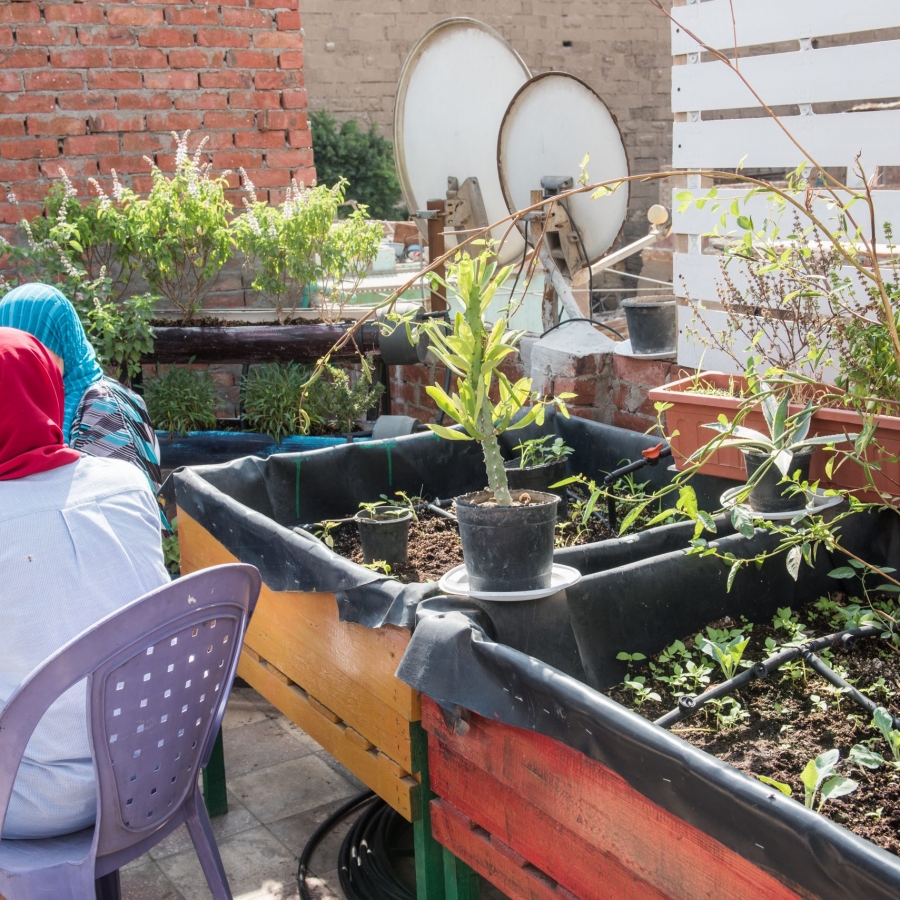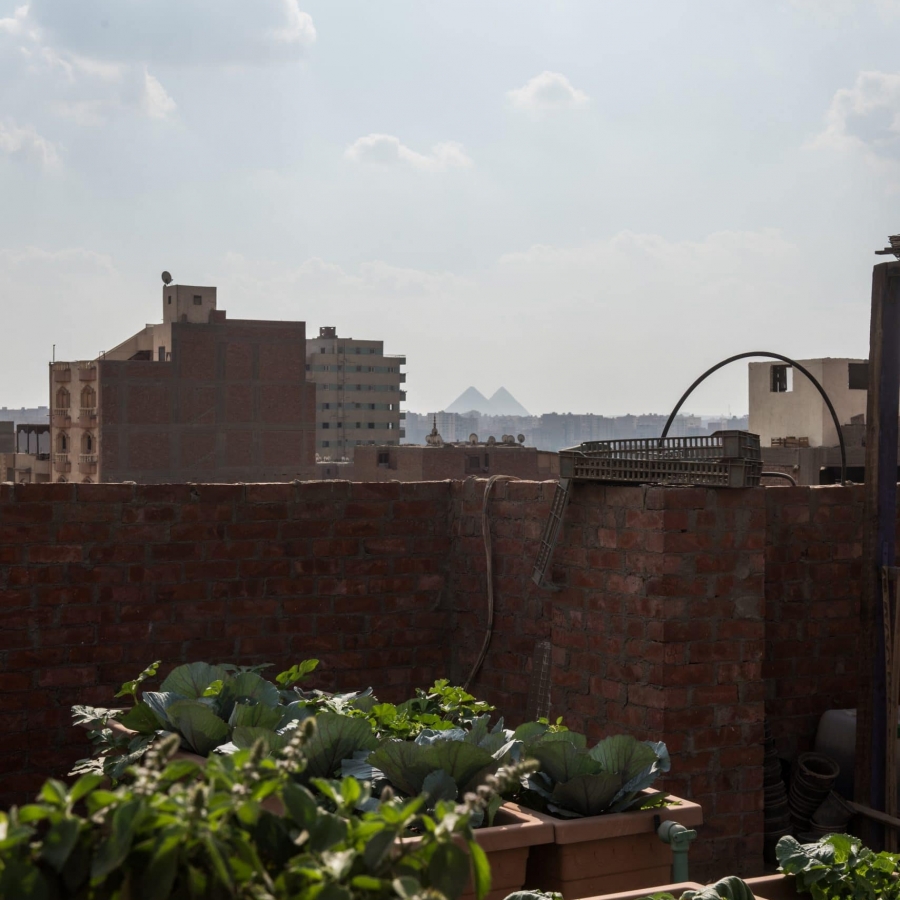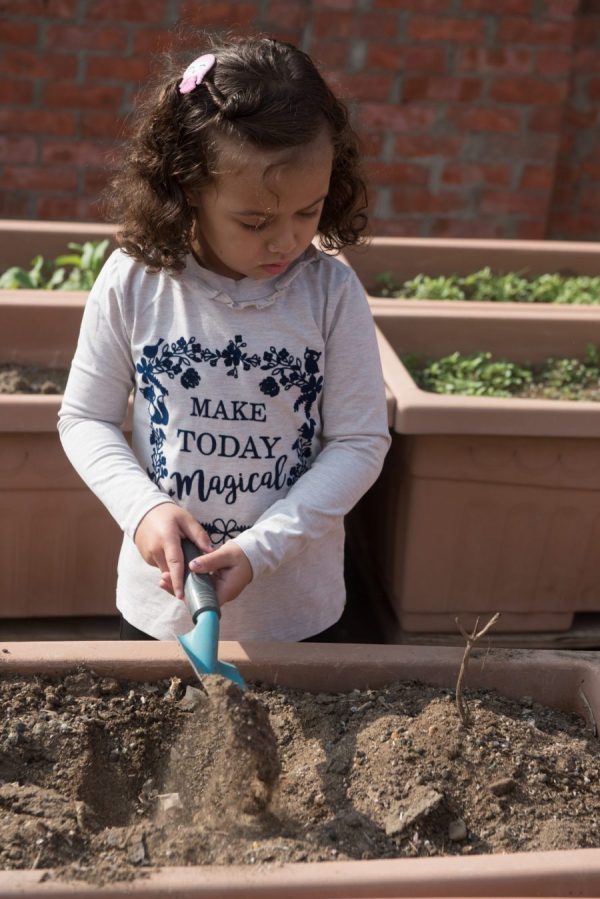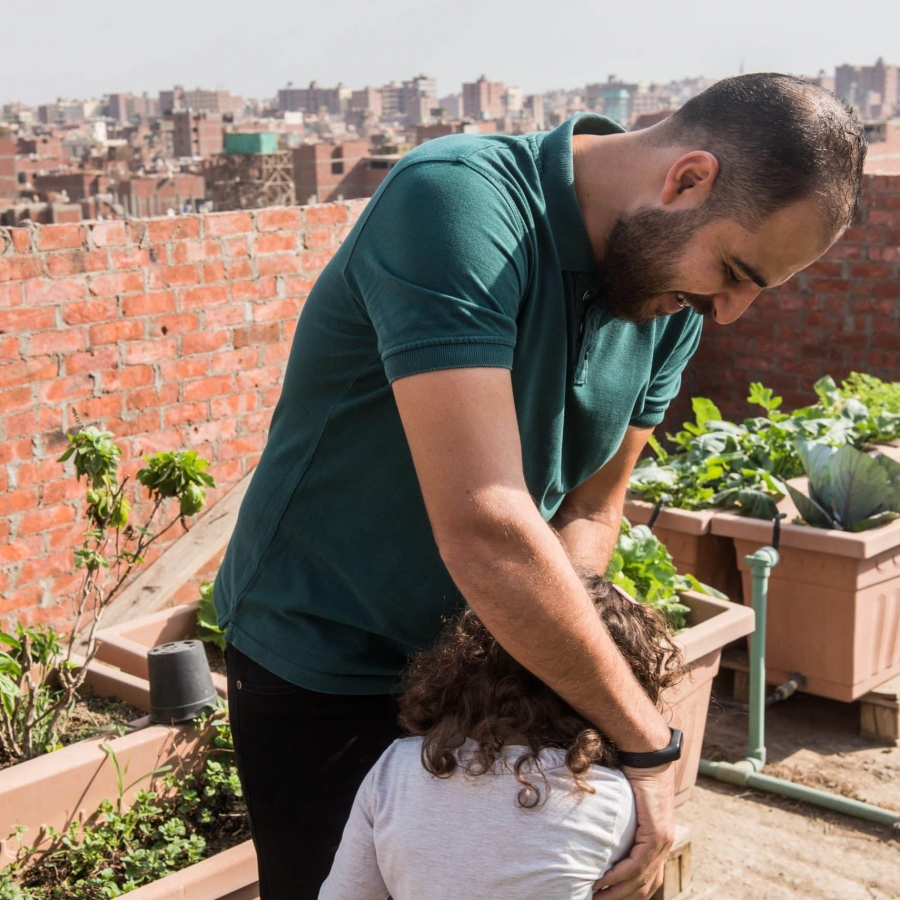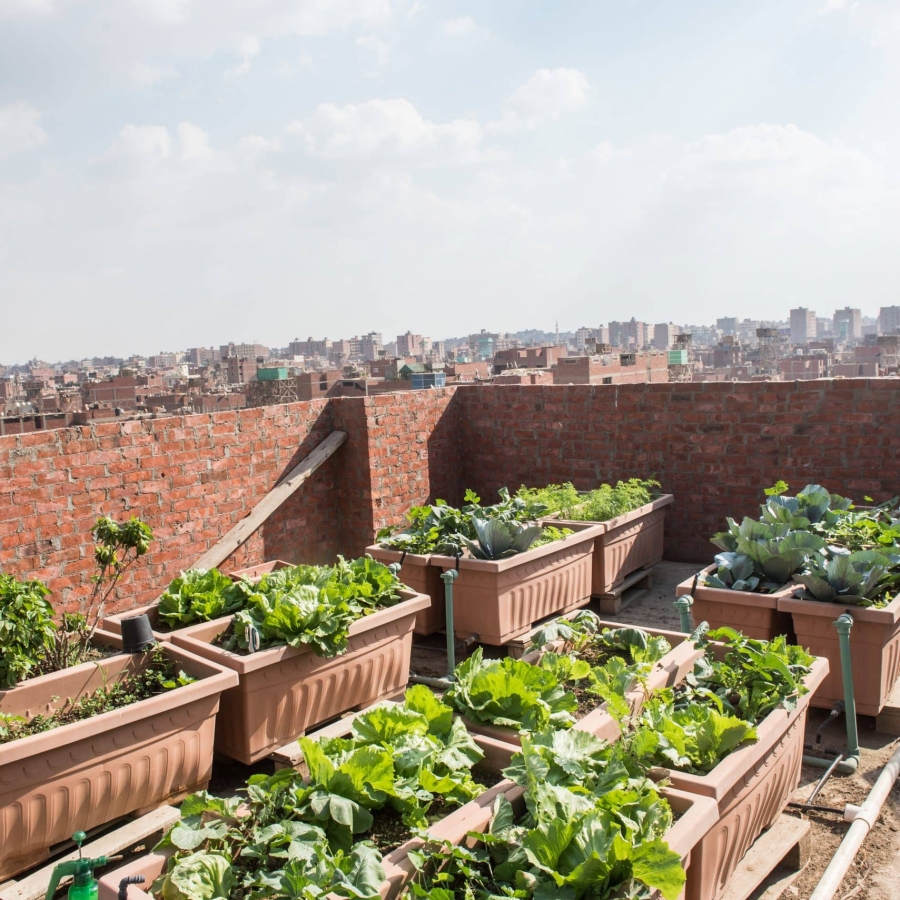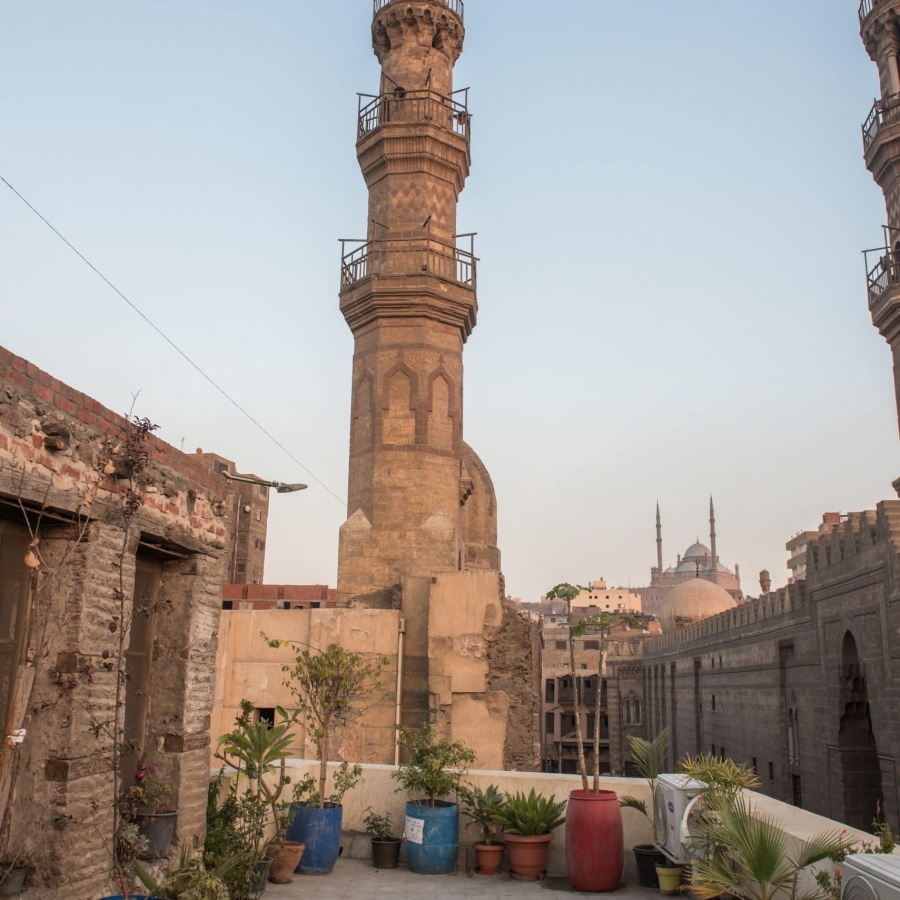
Tina Jaskolski, an assistant professor of sustainable development at AUC, saw an opportunity to engage with communities around the city while combating both food insecurity and pollution by establishing rooftop gardens. After receiving funding and technical support from the U.S. Forest Service in 2013, she set up the first rooftop garden with the goal of showcasing different farming systems and models to explore which were most cost-effective and replicable. In a city as densely polluted as Cairo, where residents have no access to nature, the gardens are about “supporting underserved communities and giving them a place to relax,” explains Jaskolski.


“I am now a gardner,” says Mohamed who is known by most in the neighborhood of Hattaba as “Khalifa.” This young rapper got involved with the rooftop garden project when he was approached by Megawera, a local NGO focused on sustainable development and protecting heritage sites. They hoped to harness Khalifa’s platform as a musician to test out the idea on the community. Khalifa is a local celebrity, with music videos on YouTube receiving over +25K views.


Khalifa’s family home sits in the heart of Islamic Cairo on top of which lies this rooftop garden—their neighbor is quite literally Salahin’s twelfth-century citadel. As the neighborhood had very little green spaces or communal places for gathering, Khalifa agreed to start his own home garden. Although it was not easy to establish, when people started providing assistance with skill-building and plant knowledge, the project became more manageable. Khalifa often finds himself watching YouTube videos to learn different names of plants and gardening techniques.


These planter pipes were installed outside the Khalifa house to serve as a preview for neighbors and a reminder of the garden above, since it is not visible to people from the street. The original plan was to have an artist paint the pipes, but during installation, the neighborhood kids were eager to help and took the painting into their own hands.


The space eventually grew into a community center. In the past, Khalifa has invited groups of women from the neighborhood to meet on his roof to make patchwork, an ancient tradition among people in Hattaba. He also plans to host a workshop for people in the neighborhood to inspire others to start their own gardens. He explains that when his neighbors visit, they are inspired to start their own projects because of how successful his garden has become. Khalifa says, “People in the neighborhood are very serious about it, but they just need some guidance.”


“Mesh Madresa” is an NGO in the Giza neighborhood of Saft El Laban that offers underprivileged children from the neighborhood after-school programs. The name, literally meaning “not a school,” focuses on creative, extracurricular activities designed to engage and inspire kids. One of these initiatives is the rooftop garden. Not only does it give children the opportunity to help care for the garden, it teaches them about gardening, sustainability, and exposes them to nature in a way that is not readily available in the neighborhood. Sitting atop the eight-story building, over a dozen planters overflow with produce. Just beyond the plants, the pyramids of Giza can be seen jutting out over the horizon.


Mahmoud (his niece Farida is pictured) lives with his family in the building that houses “Mesh Madresa.” He has taken an active role in the garden, checking on the soil, buying fertilizer, and consulting with local farmers about the best planting techniques.
The produce that is grown here is shared between the seven families living in the building, and as Mahmoud said proudly, “the whole family eats from the garden and 30 percent of our salad veggies come from the rooftop.”
Interview translated by Abdel Hamid Sherif.


Before the garden was built, the rooftop was filled with trash. In fact, no one used the roof and the kids were forbidden from venturing up here. Now, however, Mahmoud explains, “When the kids see us tending the garden, they want to participate; it is a form of play for them.” Given a choice between TV and gardening, they will choose the latter.
Interview translated by Abdel Hamid Sherif.


It was Ahnar’s son Mustafa who started this rooftop garden four years ago. While he is away now in the United States for graduate school, Anhar is the one who runs the garden. She tries to maintain it in the same way her son envisioned.
Anhar wasn’t always for the idea, however. When her son asked if he could transform this roof into a garden, she “outright objected,” saying “just a couple of plants in pots is a waste of his time”. Afterwards, she recognized just how much she misjudged the project’s value. “It is a pride thing; we are proud to have something that is rare elsewhere; our roof is unlike other roofs, which gives us a feeling of being distinguished in our own way.”


Among the many vegetables grown here are basil, watercress, radishes, cabbage, and red and green peppers. The neighborhood kids also spend time here and even help in maintaining the plants. Anhar explains, “they feel that it is their place too and we tell them that.”


Megawra, an NGO in Old Cairo, is heavily invested in urban interventions and transforming local areas into green spaces. After partnering with AUC, they decided to establish a rooftop garden on their organization’s own rooftop. AUC provided the materials, technical support, and the design while the implementation was done by AUC graduate students. Now, the garden is run by Megawra staff and provides food for the office.


Doha Moharam, who works as an architect for the NGO, explains that the roof has become her favorite place to come have a cup of tea and relax. Additionally, it has provided the office with fresh produce like mint, eggplant, and other vegetables. “Imagine this place without plants, it would be very deserted. I think plants are a form of life, they give the place spirit—like something lives here.”

